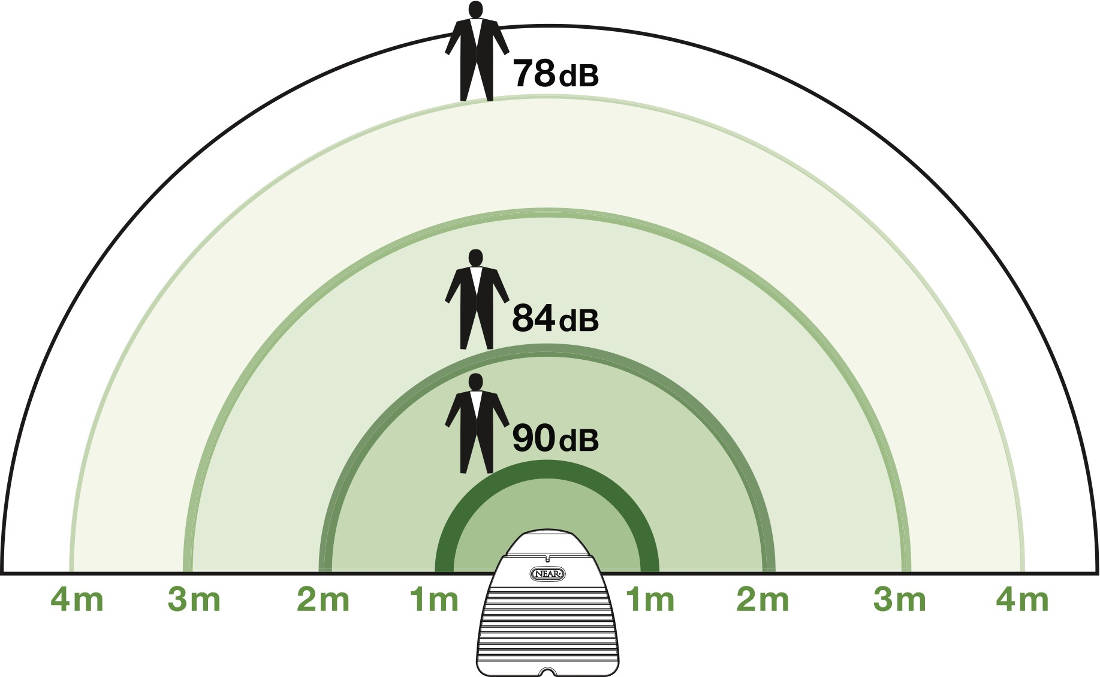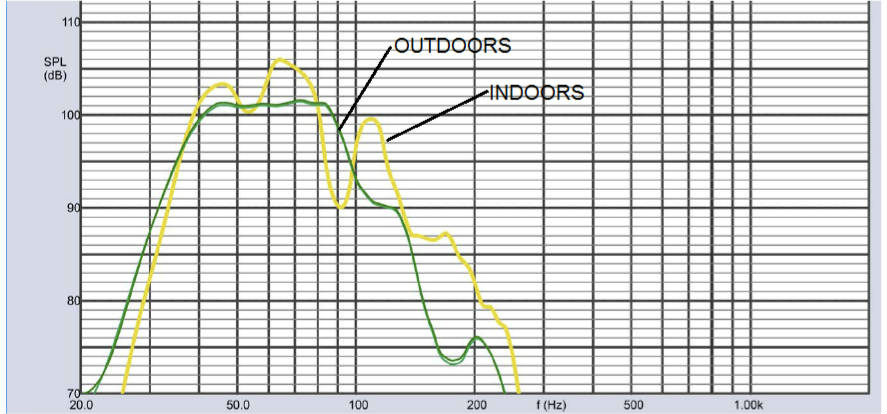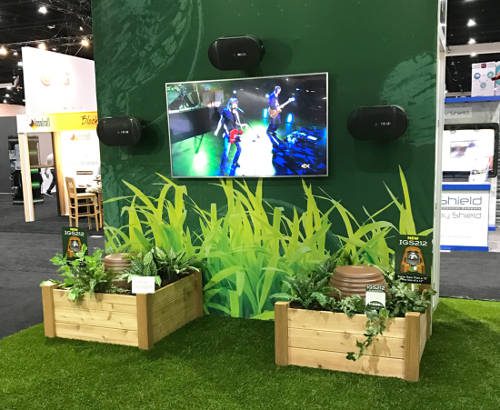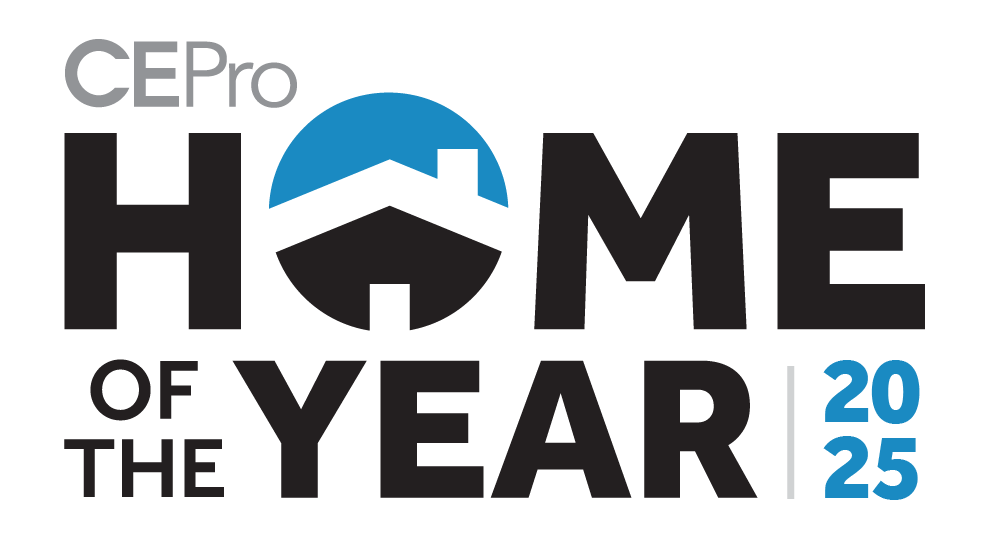The Northeast of the U.S. endured a particularly hard winter this year, especially in Maine where I live. The last thing I want to do during the warm months is be cooped up inside watching TV and movies. Apparently, I’m not alone.
According to the recent CE Pro Outdoor Technology Study, New England and Canada were the two top regions for outdoor technology installations in 2017.
Regardless of where your clients live, many indoor activities, including video entertainment, are frequently moving outdoors. But outdoor audio for video has its own set of system design challenges, and they’re different than those for music-only systems.
Here are five important tips to help you achieve outstanding results:
1. Ask the Right Qualification Questions
The first step in designing an outdoor theater system is to assess the area and the homeowner’s needs. Some of the key questions to ask are:
- How large is the space you have to fill?
- How many viewers does the system need to accommodate?
- Is the area hardscape (paved)?
- What kind of programming is the customer most interested in: TV sports only, TV news, rom-com movies, action movies, or some combination of all?
- What are the customer’s performance aspirations?
Someone with a high-ticket custom indoor home theater will likely have higher performance expectations than someone with only a soundbar indoors. These considerations will influence the type, number, and mounting locations of the speakers as well as amplifier choice.
For example, let’s assume the homeowner wants to watch mostly TV sports outdoors and the seating area is small with room for just a few seats on a paved patio.
In this case, a two-channel system with 5.25-inch two-way speakers, possibly with an on-ground subwoofer or an outdoor rated soundbar, would be adequate.
But be cautious of two-channel systems. Listeners seated well outside of the center “sweet spot” will lose the illusion that centered dialog is anchored to the screen.
Related: Outdoor Technology Grew 40% in 2017
In cases where the lateral viewing area is wide, we suggest you move up to a 3.1 channel system with a dedicated center channel speaker. Given the hardscape in this example, you can rule out in-ground speakers; go with surface mount or outdoor rated in-wall speakers.
In the cases of more substantial area/audience and high homeowner performance expectations for action movie playback, we recommend moving up to a 3.2 channel system with 6.5-inch, or better yet, 8-inch two-way speakers and two 10-inch or 12-inch subwoofers.
If the layout of the space permits it and the homeowner wants a full surround sound experience, step up to a 5.2 or 7.2 system.
2. Distance Determines Loudness
The outdoors is big. With no room surfaces to contain the sound and with the high ambient noise typically found outdoors, a critical issue in outdoor theaters is the amount of sound.
How much sound is enough? Sound outdoors follows the Inverse Square Law, where each doubling of distance between speaker and listener drops the output by an audibly significant 6dB.
If a speaker is playing at, let’s say, 70dB at 1 meter (~3 ft.), at 2 meters (~6 ft.) the sound pressure will be 64dB, and so on.

For listeners seated 4 meters (~ 13ft.) away, the sound pressure level would be only 58dB, not loud enough to overcome the typical outdoor ambient noise of 55dB to 60dB.
For clear dialog to be heard, the level needs to be at least 70dB. For action movie enjoyment, the system needs to play at 80dB to 95dB, and that takes high output speakers (preferably 8-inch) driven by at least 100-WPC.
While typical A/V receivers are fine for indoor systems, only top of the line models are adequate for serious, high-performance outdoor cinema. Better yet, use sophisticated digital signal processing (DSP) equipped power amplifiers. Later, we will see why DSP is so essential.
3. Don't Use Omnidirectional Speakers
I have long been a proponent of omnidirectional speakers for outdoor listening, but not for the front channels of outdoor theaters.
For front stage (LCR) speakers, I’ve found that low to medium dispersion (60- to 120-degree) speakers best focus the mids and highs in the listening area and deliver maximum sound pressure where it’s needed.
Most speakers with forward-facing driver arrays are low to medium dispersion designs. Omnidirectional speakers are most appropriate as side and rear channel speakers in surround systems.
Additionally, their diffuse dispersion reduces annoying speaker localization and enhances the sense of envelopment so critical to the cinema experience.
4. Deploy Dual Subwoofers
“It’s All about the Bass, the Bass” is what the song says. So, use two large subwoofers for homeowners with high-performance expectations.
In an open or partially open space, you lose the “room gain” or “boundary effect” – an acoustic phenomenon that boosts bass by several decibels.
Also working against you is the fact that human hearing is less sensitive at low frequencies than at mid and high frequencies. Getting great bass outdoors takes a lot of effort.
Multiple large driver subwoofers are an integrator’s best friends in outdoor theater design. But, you have to be careful with subwoofer placement.
If the subs and mid/high speakers are not equidistant to the listening area, the differing arrival times of the bass and mid/highs will lessen the bass impact, smear detail, and color the sound.
Solving this problem may be as simple as moving the subwoofer (if you haven’t already buried it) to more closely align the sound of subs and main speakers or by delaying the signal to the speakers electronically.
Several modern DSP-equipped amplifiers, such as models from Crown, Lexicon, and NEAR, provide the means to apply time delay. Just a few milliseconds of delay can work wonders in achieving better bass impact and overall better sound.

5. To Not Disturb Neighbors, Set Gain Limits
To not bother the neighbors, the Inverse Square Law mentioned earlier will be your friend.
If the system is rocking at 90dB in one backyard, a neighbor 16 meters (~52 ft.) away will hear 66dB; not ideal but not blasting loud either.
Working against you is the fact that below 1,000Hz, all speakers are omnidirectional. Don't fool yourself into thinking that a particular speaker type will solve the neighbor problem—it won't.
What you can do is prevent the system from being played too loudly and limit the dynamic range of the system.
Here is where DSP-equipped amplifiers save the day. Set the maximum gain limit to a loud, but not excessive, level (ask the homeowner to determine the max volume limit). If you are using an amplifier equipped with sophisticated DSP, set the limiter function to limit dynamic peak levels.
Better yet, look for DSP amplifiers that have compression capability. Compression automatically raises the volume of low-level sounds (like whispered dialog) and lowers the volume of high-level sounds (like super cool explosions).
That’s not something you want with indoor systems, but compression helps overcome the high ambient noise level outdoors while keeping peace with the neighbors. Limiting and compression are tricky parameters to set correctly, so look to the amplifier vendor for guidance.
Bill Kieltyka is general manager, NEAR, a division of Bogen Communications.







